Most cited
- Page Path
-
- HOME
- BROWSE ARTICLES
- Most cited
Most-cited articles are from the articles published during the last two years (2022 ~ ).
- Review Article
- General Pediatrics
- Motor performance of children with attention deficit hyperactivity disorder: focus on the Bruininks-Oseretsky Test of Motor Proficiency
-
Khushboo Prashant Adhvaryu, Suruliraj Karthikbabu, Pratiksha Tilak Rao
-
Clin Exp Pediatr. 2022;65(11):512-520. Published online February 17, 2022
-
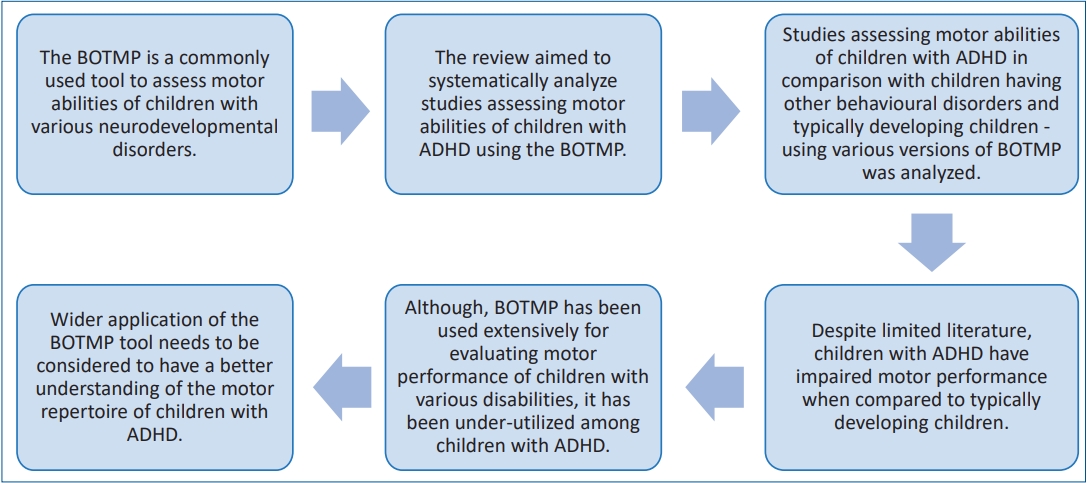
|
· Children with attention deficit hyperactivity disorder (ADHD) tend to have impaired motor performance that may affect their growth and development.
· Although widely used among children with developmental disorders, the Bruininks-Oseretsky Test of Motor Proficiency (BOTMP) is used sparsely among children with ADHD.
· Assessment by the BOTMP increases our understanding of the motor repertoire of children with ADHD.
· Wider usage of the BOTMP will enable more comprehensive planning of rehabilitation goals to enhance the motor abilities of children with ADHD. |
-
-
- Editorial
- Neurology
- Increasing our understanding of rotavirus-induced central nervous system manifestations
-
Jon Soo Kim
-
Clin Exp Pediatr. 2022;65(11):536-537. Published online May 6, 2022
-
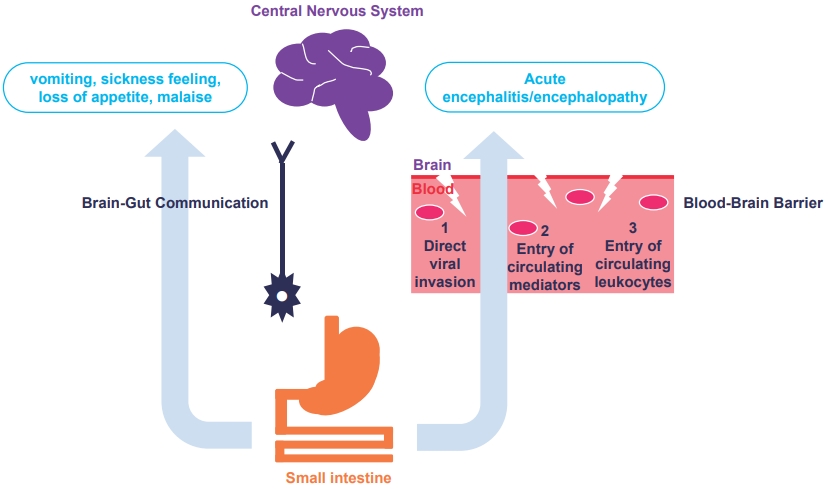
|
· Diverse clinicoradiological features of central nervous system (CNS) complications in rotavirus infection can be identified with the rapid and wide use of various brain magnetic resonance imaging protocols.
· An increased understanding of the various pathophysiological mechanisms of rotavirus-induced CNS manifestations will enable precise management in the future. |
-
-
- Original Article
- Neonatology (Perinatology)
- Mediation effect of cord blood cortisol levels between maternal prepregnancy body mass index and birth weight: a hospital-based cross-sectional study
-
Nisanth Selvam, Jayashree K, Prasanna Mithra
-
Clin Exp Pediatr. 2022;65(10):500-506. Published online July 29, 2022
-
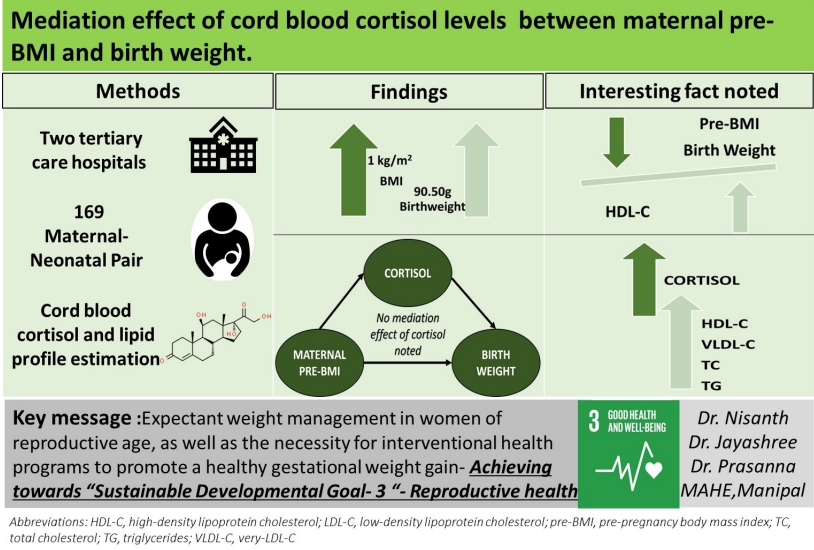
|
Question: What is the association between cord blood cortisol and maternal weight, birth weight, and cord blood lipid profile?
Finding: Cord blood cortisol levels did not influence the relationship between maternal weight changes or birth weight. Maternal weight changes, birth weight, and cortisol levels altered the cord blood lipid profile.
Meaning: Our findings may aid United Nations Sustainable Development Goal 3 (Good Health and Well-Being) achievement by 2030. |
-
-
- Editorial
- Nephrology (Genitourinary)
- Hypertension in adulthood is programmed during the perinatal period
-
Min Hyun Cho
-
Clin Exp Pediatr. 2022;65(10):494-495. Published online August 12, 2022
-
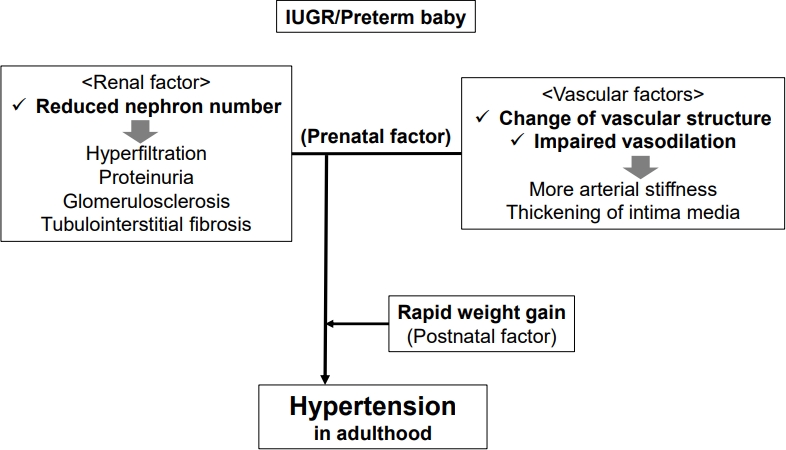
|
∙ Intrauterine growth restriction (IUGR) and preterm birth can be significant risk factors for the development of adult hypertension.
∙ Several perinatal factors of hypertension are related to IUGR, including renal, vascular, and rapid catch-up growth. |
-
-
- Original Article
- Cardiology
- Vasovagal syncope with mild versus moderate autonomic dysfunction: a 13-year single-center experience
-
Han Eoul Lee, Dong Won Lee
-
Clin Exp Pediatr. 2022;65(1):47-52. Published online June 1, 2021
-
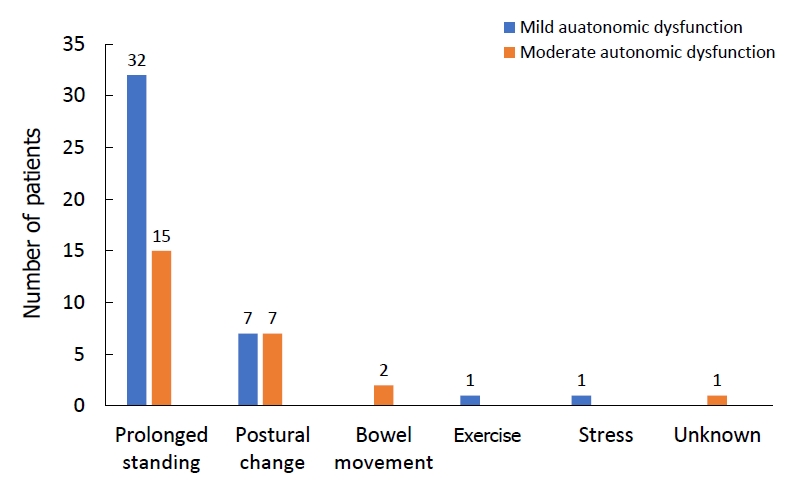
|
Question: It is well known that autonomic dysfunction contributes to vasovagal syncope (VVS). Does the degree of autonomic dysfunction contribute to clinical manifestations, diagnostic methods, treatment, and prognosis?
Finding: The clinical manifestations, diagnostic methods, treatment, and prognosis differ between patients with mild and moderate degrees of autonomic dysfunction.
Meaning: VVS is caused by autonomic dysfunction, but autonomic dysfunction severity need not be classified. |
-
-
- Review Article
- Neonatology (Perinatology)
- Growth patterns of preterm infants in Korea
-
Joohee Lim, So Jin Yoon, Soon Min Lee
-
Clin Exp Pediatr. 2022;65(1):1-9. Published online July 8, 2021
-
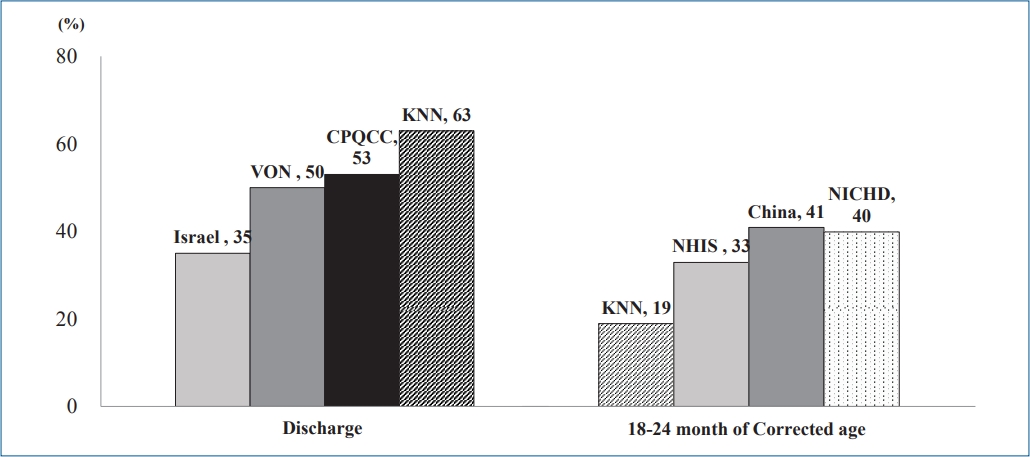
|
∙ The growth of preterm infants is a main focus of neonatology.
∙ Preterm infants in Korea, especially those with a very low birth weight, achieve retarded growth.
∙ Careful growth monitoring and early intervention will contribute to better development outcomes and quality of life for preterm infants and improve public health. |
-
-
- Letter to the Editor
- Other
- Evaluation of simulation-based ultrasound course for pediatricians: a starting point for future training curriculum
-
Chon In Kuok, Avis Siu Ha Leung, Jonan Chun Yin Lee, Winnie Kwai Yu Chan
-
Clin Exp Pediatr. 2022;65(1):53-55. Published online July 28, 2021
-
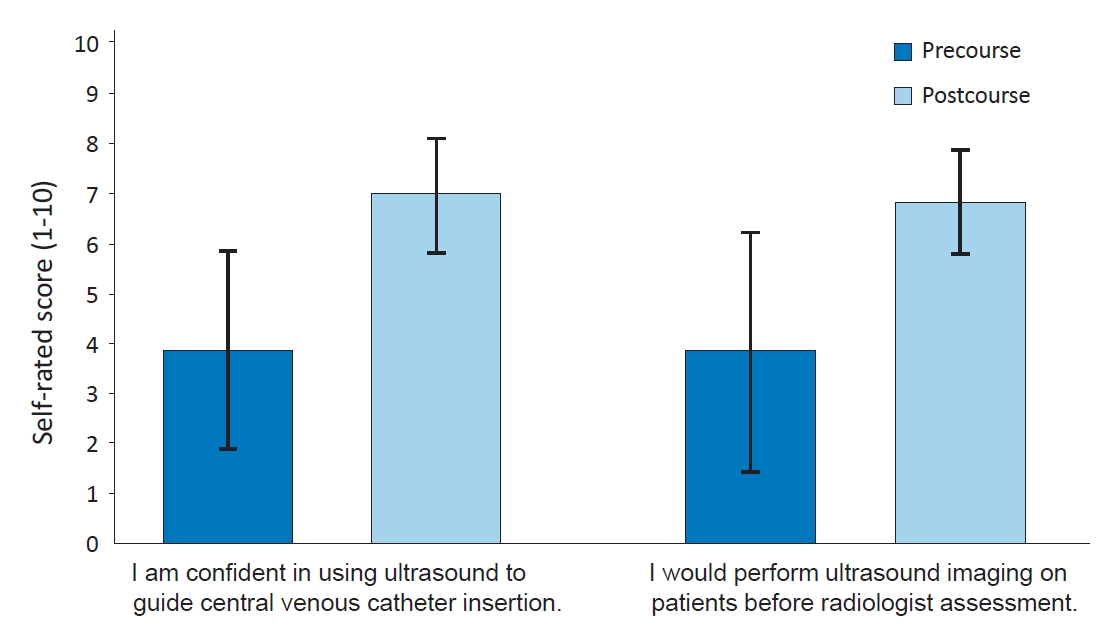
|
Question: Simulation-based ultrasound training is becoming more popular. Is there a role for pediatricians in such training programs?
Finding: Our program received promising feedback from its participants. Self-rated confidence in image interpretation and ultrasound-guided catheter insertion improved after the simulation. Participants reported a higher preference for performing ultrasound scans before radiologist assessment.
Meaning: Ultrasound training can be considered as part of the pediatric training curriculum in the future. |
-
-
- Editorial
- General Pediatrics
- Is it time to add point-of-care ultrasound education to pediatric residency curriculum?
-
Shin Ae Yoon
-
Clin Exp Pediatr. 2022;65(1):33-34. Published online October 12, 2021
-
|
|
Growing point-of-care ultrasound (POCUS) use in pediatric patients has led to the need for POCUS education for pediatric residents. Recent experimental studies have suggested that POCUS education improves self-rated POCUS confidence and comfort in pediatric resident training. Considering the effective and sustainable POCUS education curriculum in pediatric resident training, simulation-based education would be a solution. |
-
-


















